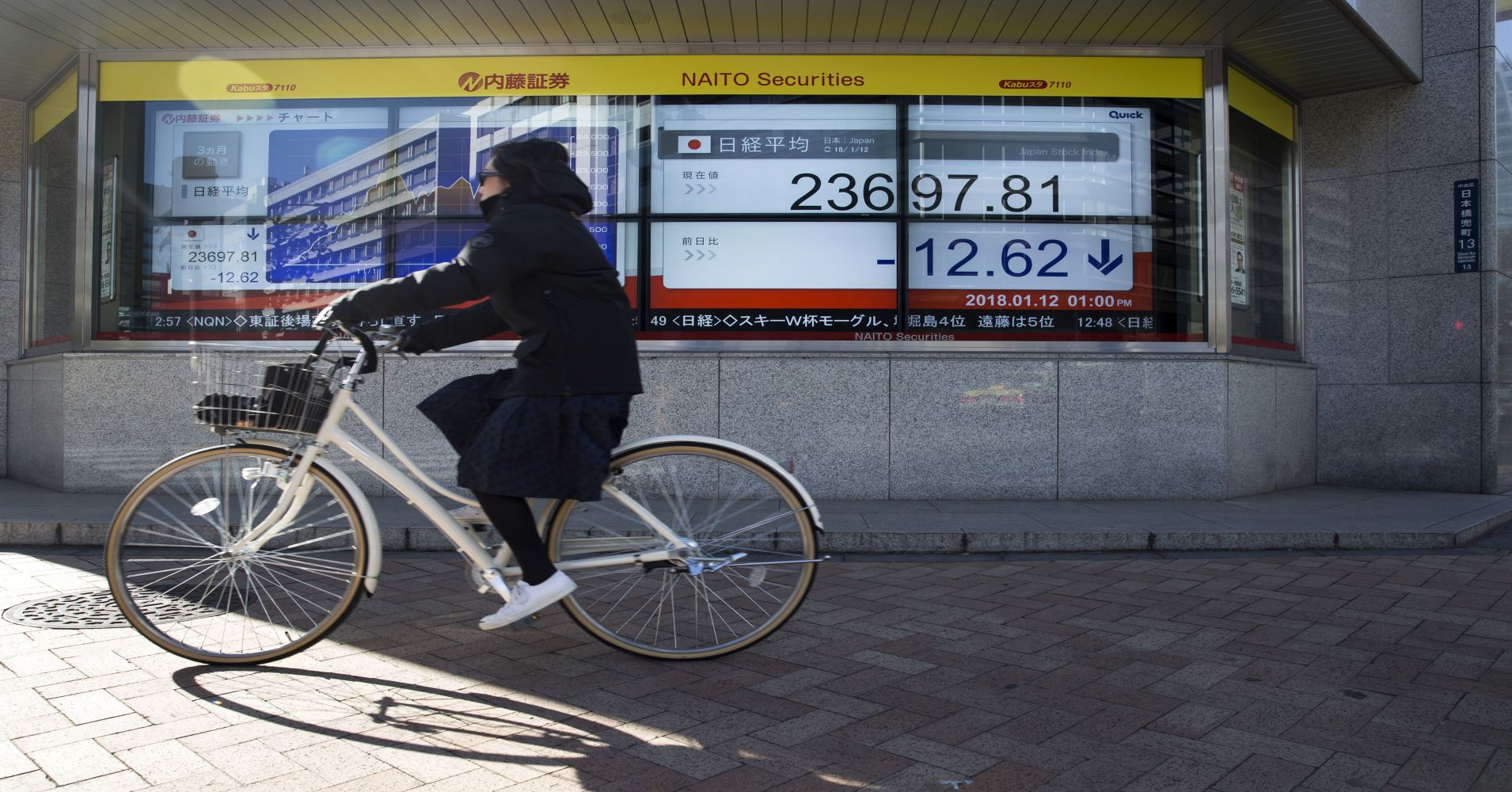
Asian shares closed narrowly mixed on Tuesday as investors digested the Bank of Japan’s decision to keep policy steady. The mixed showing also came on the back of Wall Street posting losses amid weakness in the technology sector.
The Nikkei 225 moved into positive territory on the back of the Bank of Japan’s policy decision. The benchmark closed higher by 0.04 percent, or 8.88 points, at 22,553.72, despite most sectors finishing in negative territory. Shippers and mining stocks rose, while banks and utilities were among the worst performing sectors. The broader Topix eased 0.84 percent.
Meanwhile, the Kospi ended the day higher by 0.08 percent at 2,295.26 after trading both above and below the flat line. That came as shares of Samsung Electronics slipped 0.54 percent after the smartphone and chipmaker reported second-quarter operating profit came it at 14.9 trillion won (around $13.4 billion), topping the company’s own projection of 14.8 trillion won, according to Reuters. Revenue for the quarter came in at 58.5 trillion won, mostly matching an earlier forecast.
In Australia, the S&P/ASX 200 finished the day marginally higher at 6,280.20, some 0.03 percent higher than its last close, with the energy subindex leading gains. Elsewhere, Hong Kong’s Hang Seng Index edged lower by 0.5 percent by 3:00 p.m. HK/SIN.
Chinese shares ended the day in different directions following the release of official manufacturing PMI that slightly missed expectations. The Shanghai Composite tacked on 0.26 percent to close at 2,876.40 while the Shenzhen Composite inched down by 0.02 percent to 1,576.41.
The broad MSCI Asia Pacific ex Japan index was trading lower by 0.2 percent in Asia afternoon trade.
Central banks were top of mind for investors, with the Bank of Japan keeping policy steady, as was widely expected, but making its policy framework more flexible for the long-term yield target. The BOJ maintained its target for the 10-year government bond yield at around zero percent.
The slight adjustment was seen as somewhat of a letdown after earlier reports that the central bank could modify policy to make its program more sustainable.
The central bank’s quarterly report “left little doubt about the policy bias, noting ‘risks to the price outlook are skewed to the downside,’ ‘more time will be needed’ to hit 2 percent and the risk of destabilizing the financial system from a continued low rate environment ‘are not significant for now,'” said Sue Trinh, head of Asia FX strategy at RBC Capital Markets.
While the stronger yen and higher Japan government bond yields ahead of Tuesday had led to speculation about tweaks to yield curve control, “[i]n the end, the BOJ may be simply seeking more flexibility in achieving its inflation goal rather than abandoning its commitment to monetary stimulus,” Philip Wee, FX strategist at DBS Bank, said in a note published before the central bank’s decision was announced.
The yen saw volatile trade following the announcement, rising to trade as high as 111.44 to the dollar — around a one-week high — compared to levels as low as 110.76 seen earlier. The yen traded at 111.23 to the dollar at 2:56 p.m. HK/SIN.
The mixed session in Asia also came after U.S. stocks declined on the first trading day of the week, with sharp falls in major tech names contributing to the Nasdaq Composite’s 1.39 percent drop for the day. The tech-heavy index closed at 7,630 on Monday and has recorded a three-day decline of 3.86 percent, its largest since March.
So-called FANG stocks, referring to a group of large-cap technology sector shares, turned in a poor showing on Monday: Netflix led the declines and dropped 5.7 percent and Facebook lost 2.1 percent in the wake of its quarterly results and guidance disappointing last week.
The Federal Reserve’s Federal Open Market Committee, meanwhile, was due to begin its own monetary policy meeting on Tuesday U.S. hours, with a decision due on Wednesday. The Fed is expected to keep rates steady at the end of its meeting.
The dollar index, which tracks the dollar against a basket of currencies, was mostly steady at 94.341.
— CNBC’s Weizhen Tan contributed to this report.

